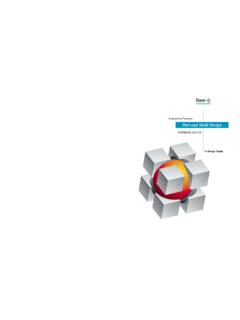Transcription of Nippon Steel Carbon Neutral Vision 2050
1 TSE Securities Code: 5401 March 30, 2021 Nippon SteelCarbon Neutral Vision 2050A Challenge of Zero- Carbon Steel 2021 Nippon Steel CORPORATION All Rights of Contents1. Scenario to realize Zero- Carbon SteelP. 32. CO2emissions in steelmaking processP. 93. Breakthrough technology development(1) High-grade Steel production in large-sized (2) Hydrogen injection into (3) 100% hydrogen use in direct Technological challenges and required external conditions : Carbon : BF: Blast Furnace, BOF: Basic Oxygen Furnace, BT/Y: Billion Tons per Year,CCS: Carbon Capture Storage,CCU: Carbon Capture Utilization,CCUS.
2 Carbon Capture Utilization Storage, DRI: Direct Reduced Iron, EAF: Electric Arc Furnace, H2: Hydrogen, HBI: Hot Briquetted Iron, MT/Y:Million Tons per Year 2021 Nippon Steel CORPORATION All Rights Scenario to realize Zero- Carbon Steel 2021 Nippon Steel CORPORATION All Rights Steel Carbon Neutral Vision 2050 The Challenge of Zero- Carbon SteelAdopting " Nippon Steel Carbon Neutral Vision 2050 The Challenge of Zero- Carbon Steel , as our own new initiative against climate change, a critical issue affecting human beings, we will strive to achieve Carbon neutrality by 2050 as our top priority management issue.
3 We have decided to actively work to achieve zero- Carbon Steel as a top priority management issue, and have established a new "Key Phrase" to summarize our environmental management and an "Activity Logo" to represent our activities as our "Environmental Brand Mark". We will make a concerted effort to tackle these extremely difficult PhraseActivity Logo 2021 Nippon Steel CORPORATION All Rights Steel : Our CO2 emissions reduction scenarioVision 2050[Scope of Scenario]DomesticSCOPE I + II(Receipt of raw materials to product shipment) + (CO2at the time of purchase power production)102 91 702013 20192030 Target2050 VisionCarbonOffsetTotal CO2emissions (MT/Y)30% reduction(Vs.)
4 2013)CarbonNeutral2030 Target[Means] Actual implementation of the COURSE50 in the existing BF and BOF process Reduction of CO2emissions in existing processes Establishment of an efficient production framework.[Means] Mass-production of high-grade Steel in large size EAFs Hydrogen reduction steelmaking (by Super-COURSE50 use of BFs; direct reduction of 100% hydrogen) Multi-aspect approach, including CCUS* and other Carbon offset measures,.30% or more reduction in total CO2 emissions vs. 2013 Aim to become Carbon Neutral * Carbon dioxide Capture, Utilization, and Storage 2021 Nippon Steel CORPORATION All Rights steelmaking processIronmakingSteelmakingOUTPUTPROCES SINPUTBOFR olling millEAF processBF + BOF processIron oreCoalScrapElectric powerCO2CO2CO2BF 2021 Nippon Steel CORPORATION All Rights technologiesCCUS*Chemicals, biofixing.
5 Underground storageCarbon Neutral steelmaking processHigh-grade Steel production in large size EAFI ronmakingSteelmakingSuper-COURSE50 BFIncreased use of scrapOUTPUTPROCESSINPUT3 external conditions required for realizing zero- Carbon steelBOFR olling millEAF routeBF and BOF routeIron oreCoking coalScrap* Carbon Capture, Utilization, and StorageCarbon free hydrogenCarbon free powerCO2CO2100% hydrogen use in direct reduction processDirectly reduced ironDirectly reduced iron 2021 Nippon Steel CORPORATION All Rights CO2emission in existing processes (advance in existing technology, expanded use of scraps and waste plastics, etc.)
6 Our roadmap of CO2 emissions reduction measures-30%(vs FY2013)CO2 reduction targetHydrogen injection into BFLower Carbon power (higher-efficiency power generation facilities, use of low Carbon fuel in coal-powered generation, etc.)Building of an efficient production systemCarbon neutralProduction of high-grade Steel in large size EAFsDev tPractical implementation100% hydrogen use in direct reductionDev tCCS (underground storage)/CCU (re-use)Dev tSuper-COURSE50 Dev tPractical implementationActual demonstration testCOURSE50 Dev tPractical implementationActual demonstration test(Kimitsu)2008 Practical implementationEAF routeBF and BOF routeBreakthrough technology development(centralized production at an integrated Steel mill, etc.)
7 (some transfers from BFs to EAFs, etc.)External conditions 2021 Nippon Steel CORPORATION All Rights CO2emissions in steelmaking process 2021 Nippon Steel CORPORATION All Rights 102030CO2 emissions in steelmaking processCommercial-use19%Industry39%Trans portation20%Energy conversion 8%Households 16%Otherindustries23% Nippon Steel9%Other steelproducers 6%Japan s CO2emission by sector Steel is an Earth-friendly material as Steel produces less CO2per unit of production and during its entire life cycle, compared to other materials.
8 And is highly recyclable. The total amount of CO2emitted by the Steel industry is high since Steel has an overwhelmingly wider range of applications and is used extensively in large quantities compared to other application of Steel productsCommercial-use 6%Industry25%Transportation18%Energy conversion39%Households 5% 9%Non-energy source7%By emitting sectorBy using sectorSteel industryAutomotive material s CO2emission in productionPackaging material s CO2emission in production050100150 kg-CO2eq/kg-Material) kg-CO2eq/kNm)
9 Source: Ministry of the Environment, National Greenhouse Gas Inventory Report of Japan 2020 AluminumCarbon fiber reinforced plasticsSteelSteelAluminumPlastic(polypr opylene)Paper(milk carton) 2021 Nippon Steel CORPORATION All Rights iron ore that exists as iron oxides( , Fe2O3) in nature,Iron ore needs to be reducedSteelis ton of steelmaking emits about 2 tons of CO2 FeFe2O3CO2 CCarbon (C) removes the oxygen (O) (reduction) in the iron ore as Carbon is more reactive than iron (Fe).In nature, iron exists as oxides, iron produce Steel products, oxygen must be removed (= reduced) from iron use of Carbon (coal) is the best, stable, cost-effective method for reducing iron ore in large reaction, however, emits 2021 Nippon Steel CORPORATION All Rights (Appendix) BF method steelmaking oxideCCarbonFeMolten iron Sintering machineCoke ovenBOFC ontinuous casterSteel productsCoking coalBFCO2 Iron ore1) Iron oxide is removed of oxygen (reduced) and melted,2)
10 Transported in liquid state,3) removed of impurities,4) solidified into semi-finished products with standardized sizes,and 5) processed into Steel Annealing 2021 Nippon Steel CORPORATION All Rights in steelmaking processCoke (Iron ore reduction) (t-CO2/Hot-rolled coil)Basic oxygen rolling to majority of CO2emissions in the steelmaking process is derived from the iron ore reduction process in the blast : Carbon Trust: International Carbon Flows (2011) 2021 Nippon Steel CORPORATION All Rights S.










